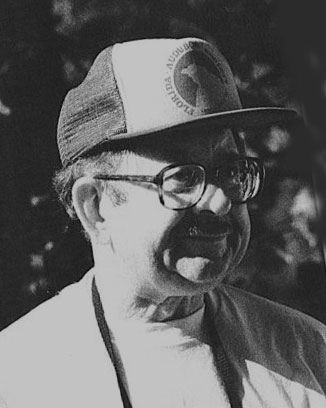Breeding Bird Atlas
You are here : Home / Get Involved / Breeding Bird Atlas
Breeding Bird Atlas
Grid-based atlases are efforts to document systematically the occurrence of plant or animal species within a given area. Two monumental efforts in Britain, Atlas of British Flora (Perring and Walters 1962) and Atlas of Breeding Birds in Britain and Ireland (Sharrock 1976), unleashed a plethora of projects around the globe including many in the United States and Canada.
FL BBA I
The first Florida Breeding Bird Atlas project attempted to record the breeding distributions of all bird species in the state during 1986-1991. The Atlas project was a collaborative effort of Audubon of Florida, the Florida Ornithological Society, and the Florida Fish & Wildlife Conservation Commission. More than 1,880 participants, most of them volunteers, were involved in conducting surveys and compiling data. 196 species were confirmed breeding, and another 19 species were found to be probable or possible breeders in the state.
Maps for Florida Breeding Bird Atlas I can be found at the website of the Florida Fish and Wildlife Conservation Commission.
FL BBA II
With the blessing of the FOS Board, a committee (Ann Paul, Jim Cox, Adam Kent, David Stock, Ann Hodgson, and Todd Engstrom) is working on the Florida Breeding Bird Atlas (BBA) II. We hope to publish BBA II in 2023-2024 as a FOS Special Publication.
Florida BBA II species accounts will include:
• USGS Breeding Bird Survey graphs for surveywide and Florida population trends.
• Diane Pierce artwork. (The same artwork as in BBA I) and additional species.
• A brief (400 word) species account and population change evaluation.
• FOS is collaborating with the University of South Florida Libraries to publish the on-line version of BBA II.
Authors of BBA I species accounts will be asked if they want to work the same species for BBA II. Other biologists will be specifically asked to write some species accounts, but anyone who wants to participate as a species account writer is encouraged to contact us.
We will publish Florida BBA II on the FOS website, but we will also consider a limited print run of books by advance subscriptions.
Literature Cited
Perring,F.H., and S.M. Walters (eds.). 1962. Atlas of British Flora. Botanical Society of the British Isles.
Sharrock, J.T.R. 1976. The Atlas of Breeding Birds in Britain and Ireland. Poyser.
Florida Breeding Bird Atlas I: A Short History
Field surveys for the Florida Atlas project began in 1986 and were concluded in 1991. Volunteers visited atlas blocks and recorded the birds found there. The grids used to delineate atlas blocks were the 7.5-minute topographic quadrangle maps prepared by the U.S. Geological Survey. Each 7.5-minute quadrangle was divided into 6 equal-sized atlas blocks that encompassed about 10 square miles (25 square km). Florida is made up of approximately 6,234 atlas blocks, but not all blocks were visited.
Atlas volunteers were provided a handbook describing data collection methods and were encouraged to locate every bird species breeding within their assigned block. Evidence of breeding was subdivided into 3 broad categories: POSSIBLE, PROBABLE, and CONFIRMED. The breeding evidence goes as follows.
POSSIBLE: species observed in breeding season in suitable habitat; singing male present or breeding calls heard in suitable nesting habitat but not in breeding season.
PROBABLE: pair observed in suitable habitat in breeding season; bird apparently holding or defending a territory or singing male present on at least two days, a week or more apart; courtship behavior or copulation observed; species visiting probable nesting site; agitated behavior or anxiety calls observed; brood patch observed; nest building or excavation of a nest cavity, or bird carrying nesting material observed; or seven or more territorial males in a block observed at least a week apart.
CONFIRMED: distraction display or adult feigning injury; used nests or egg shells found; female with egg in oviduct; recently fledged young observed; adult on nest or seen in circumstances indicating an occupied nest; adults carrying fecal sac or food; nest with eggs; or nest with young.
The second Florida Breeding Bird Atlas was initiated in 2011 with field work completed in 2017. Draft results are available. A final BBA II publication is in development. Stay tuned for more details!

Herbert W. Kale
The Atlas project was conceived and promoted by Dr. Herbert W. Kale, II, chief ornithologist with the Florida Audubon Society until his death in 1995. Other people who helped organize data, motivate participants, and create maps included Wes Biggs, Bill Pranty, and Dr. Brad Stith. Stuart Cumberbatch and Brian Millsap with the Florida Fish and Wildlife Conservation Commission helped to assemble the maps for this booklet. There were hundreds of other people involved in this project, and a more comprehensive acknowledgment appears in the web publication here

“ Bird watching embraces individual enterprise on the one hand, collective effort on the other. Above all else, it is marked by a ready exchange of experience, by a high regard for truth, and by a conviction that wild birds express the most spectacular development of nature. ”

